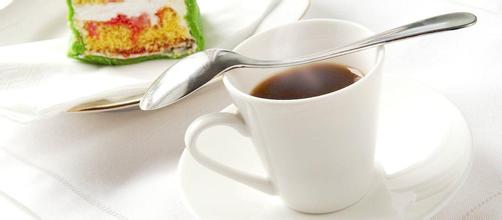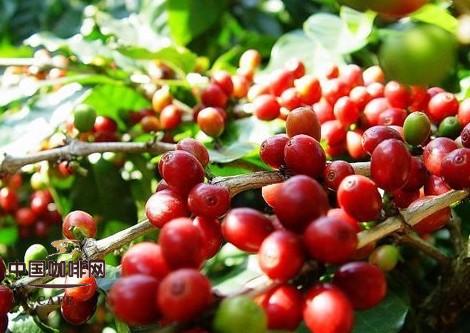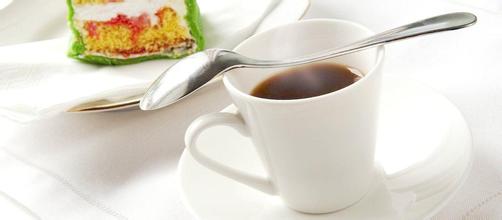Jamaican Coffee Manor introduces the flavor of Jamaican Blue Mountain Coffee
Blue Mountain Coffee Garden Coffee beans carefully roasted Blue Mountain Coffee beans the beautiful beach outside Port Antonio, Jamaica the Jamaican capital Kingston almost everyone who has heard of Jamaican blue mountain caffeine (Jamaican Blue Mountain) knows that it is the most expensive coffee in the world, but not everyone knows why. Like Rolls-Royce cars and Strawley violins (Stradivarius violin), when something gains the reputation of "the best in the world", that reputation tends to make it its own identity and become an immortal myth.
The best Jamaican Blue Mountain Coffee is undoubtedly the most famous coffee in the world. It tastes more expensive than it looks. The real Blue Mountain Coffee is made from the best coffee beans in Jamaica, which is the fun of tasters. It has all the substances of coffee, rich flavor, balanced, fruity and perfect sour taste, three tastes (sweet, sour, bitter) excellent blending, for coffee in the best, generally a single drink. In addition, the flavor of high-quality fresh Blue Mountain coffee is particularly long-lasting, as drinkers say-endless aftertaste. But in fact, few people know the history of Blue Mountain Coffee and why its price is so high.
In 1725, Nikolai? Sir Sir Nicholas Lawes brought the first blue mountain coffee trees from Martinique to Jamaica and planted them in the St. Andrew area. In eight years, Jamaica exported more than 375 tons of pure coffee. In 1932, when the Jamaican law was passed to encourage coffee farming to reduce the island's dependence on sugar exports, coffee production peaked and more than 15000 tons of coffee was harvested.
In 1948, the quality of coffee had declined and Canadian buyers refused to renew their contracts, so the Government of Jamaica established the Coffee Industry Committee and made changes to the "Jamaican Coffee Industry" to standardize the process and improve the quality of coffee. to make marketing equal in order to save the fate of top coffee. By 1969, the market was guaranteed by the use of Japanese loans to improve the quality of production. By 1981, about 1500 hectares of land in Jamaica had been reclaimed for coffee cultivation, followed by investment in another 6000 hectares of coffee land. in fact, the Blue Mountains area today is a small area with a planting area of only 6000 hectares. it is impossible to grow all coffee marked "Blue Mountain" there. Another 12000 hectares of land is used to grow two other types of coffee (non-Blue Mountain Coffee): Alpine Top Coffee (High Mountain Supreme) and Jamaican premium coffee (Prime Washed Jamaican). Their quality and taste are not as good as those of the Blue Mountains.

Important Notice :
前街咖啡 FrontStreet Coffee has moved to new addredd:
FrontStreet Coffee Address: 315,Donghua East Road,GuangZhou
Tel:020 38364473
- Prev

Rose summer Panama Kadura Kadura Cupid Manor Baru Volcano Cupid Coffee raw beans
The Baru volcano is not only the highest mountain in Panama, but the sediments created by early volcanic activity and eruption bring a large amount of very fertile soil, which is rich in nutrients, especially rich in phosphorus and sulfur, mixed with clay, coupled with a unique climate model, to form an environment suitable for the growth of high-quality coffee, dense forests and a large number of dense forests.
- Next

Jamaica Coffee Manor introduces Cliff Manor Jamaican boutique coffee beans
By 1969, the situation had improved because the use of Japanese loans improved the quality of production, thus ensuring the market
Related
- Does Rose Summer choose Blue, Green or Red? Detailed explanation of Rose Summer Coffee plots and Classification in Panamanian Jade Manor
- What is the difference between the origin, producing area, processing plant, cooperative and manor of coffee beans?
- How fine does the espresso powder fit? how to grind the espresso?
- Sca coffee roasting degree color card coffee roasting degree 8 roasting color values what do you mean?
- The practice of lattes: how to make lattes at home
- Introduction to Indonesian Fine Coffee beans-- Java Coffee producing area of Indonesian Arabica Coffee
- How much will the flavor of light and medium roasted rose summer be expressed? What baking level is rose summer suitable for?
- Introduction to the characteristics of washing, sun-drying or wet-planing coffee commonly used in Mantenin, Indonesia
- Price characteristics of Arabica Coffee Bean Starbucks introduction to Manning Coffee Bean Taste producing area Variety Manor
- What is the authentic Yega flavor? What are the flavor characteristics of the really excellent Yejasuffi coffee beans?

